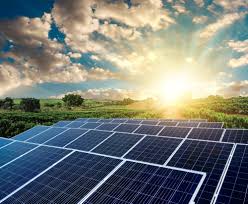
The European Union is on track to record its first annual slowdown in solar energy installations since 2015, upending more than a decade of relentless expansion. Industry projections indicate that new solar capacity additions will reach approximately 64.2 gigawatts in 2025—down from 65.1 GW the previous year. This stagnation carries significant implications for the bloc’s ability to meet its climate and energy security objectives, and it underscores how shifting policy priorities, rising financing costs and grid constraints have combined to sap momentum in what was long viewed as a cornerstone of Europe’s clean‑energy transition.
Policy Shifts Dampen Rooftop Adoption
At the heart of the slowdown lies a pronounced contraction in subsidy support for residential rooftop systems. Germany, which historically led EU rooftop markets, has cut feed‑in tariffs and introduced a complex revision of compensation payments for surplus power fed back to the grid. New rules limiting remuneration during peak hours, coupled with changes to renewable heating legislation, have sown confusion among homeowners and installers.
France has followed suit by trimming its own rooftop incentives, and the Netherlands has scaled back its grant for household exporters of excess solar electricity. The combined effect is stark: the residential segment, which represented roughly 30 percent of all new installations between 2020 and 2023, is now forecast to account for just 15 percent of new capacity in 2025. This halving of market share in under two years signals a dramatic shift away from small‑scale projects that once drove broad public engagement with solar power.
Economic Headwinds and Market Uncertainty
Beyond subsidy retrenchment, macroeconomic pressures have also weighed heavily on demand. Since early 2022, successive interest‑rate increases across the eurozone have pushed up the cost of project financing, making the returns on rooftop and small‑scale ground‑mounted arrays less attractive relative to other investment options. Developers and end users have found that higher borrowing costs can eat into the payback periods that were a key selling point for solar installations. Furthermore, the initial surge in module purchases in 2022 and 2023—fueled by fears of supply‑chain disruptions—has left many installers with backlogged inventory. With module prices falling in response to global oversupply, buyers are delaying purchases in the hope of securing even lower equipment costs. This anticipation of further price declines has compounded a sense of paralysis in the market, with prospective customers reluctant to commit until both financing and hardware costs stabilize.
On the utility‑scale front, projects continue to claim the lion’s share of capacity gains—around 85 percent of the expected additions for 2025—but here too momentum is faltering. Auction volumes in several major markets, including Spain and Italy, have been reduced as governments balance fiscal discipline with renewable ambitions. Bidders have reported modest price floors and tighter qualification criteria, leading to muted participation. Compounding these factors are persistent grid‑integration issues: aging distribution networks in many member states lack the flexibility to absorb intermittent solar generation at scale. Lengthy permitting timelines remain a common complaint, with developers facing delays of six months to over a year before securing the green light for new installations. Local opposition, often rooted in land‑use concerns or aesthetic objections, adds further uncertainty.
Yet solar’s underlying economics remain compelling. Technology costs have plummeted over the past decade, and the levelized cost of electricity from new solar plants now rivals that of conventional gas‑fired power in many regions. Corporate sustainability commitments are increasingly pushing multinationals to sign long‑term power‐purchase agreements, creating a steady pipeline of demand for utility‑scale projects. Moreover, grid‑scale battery storage deployments are beginning to complement solar farms, enabling operators to time‐shift peak output and alleviate network strain. If policymakers can deliver clearer, longer‑term signals—such as harmonized permitting rules, minimum subsidy floors to stabilize auction volatility, and support for storage integration—the industry may well rebound.
The broader geopolitical landscape also casts a long shadow over Europe’s solar ambitions. Energy security concerns have prompted several governments to reconsider the pace at which renewables alone can guarantee grid stability, especially during winter months when solar output wanes. In Germany, the incoming government has signaled plans to reassess renewable targets and bolster gas backup capacity, a move that could crowd out new solar investment. Similar debates are playing out in France and Italy, where industrial lobbies argue for a diversified energy mix that retains a role for natural gas. This policy ambivalence can erode investor confidence and slow the shift away from fossil fuels—just as the EU seeks to phase out reliance on Russian energy supplies.
Despite these hurdles, the sector remains cautiously optimistic. Solar already contributed a record share of monthly electricity—some 22 percent across the EU in June—underscoring its potential as the bloc’s largest single source of green power. Industry associations are calling for a European Solar Power Purchase Platform to assist small and medium‑sized enterprises in securing long‑term contracts, and for the rapid rollout of smart grid upgrades to ease integration bottlenecks. On the legislative front, proposed measures aim to shorten national permitting deadlines to six months and to launch competitive tenders specifically for rooftop installations, thereby reigniting grassroots participation.
Consumer sentiment surveys point to lingering interest: more than one in three households in core markets still regard rooftop solar as an appealing investment, provided that incentives remain transparent and financing terms attractive. Installers argue that stabilizing policy frameworks—ideally via multi‑year subsidy tranches or tax credits—would unlock pent‑up demand and drive a quick rebound in residential installations. As policymakers craft the next EU budget and review national energy plans, the challenge will be striking the right balance between fiscal prudence, energy security and accelerating the low‑carbon transition.
Ultimately, whether the solar slowdown proves a temporary plateau or presages a longer‑term stagnation will depend on coordinated action at both national and EU levels. Smooth grid integration, clear and consistent subsidy schemes, improved access to affordable finance, and ongoing support for manufacturing scale‑up are all vital cogs in the machinery needed to revive growth. Given the urgency of climate goals and the economic benefits of homegrown clean‑energy industries, Europe’s solar sector remains too important to let a single year of contraction derail a decade of achievement.
(Source:www.marketscreener.com)
Policy Shifts Dampen Rooftop Adoption
At the heart of the slowdown lies a pronounced contraction in subsidy support for residential rooftop systems. Germany, which historically led EU rooftop markets, has cut feed‑in tariffs and introduced a complex revision of compensation payments for surplus power fed back to the grid. New rules limiting remuneration during peak hours, coupled with changes to renewable heating legislation, have sown confusion among homeowners and installers.
France has followed suit by trimming its own rooftop incentives, and the Netherlands has scaled back its grant for household exporters of excess solar electricity. The combined effect is stark: the residential segment, which represented roughly 30 percent of all new installations between 2020 and 2023, is now forecast to account for just 15 percent of new capacity in 2025. This halving of market share in under two years signals a dramatic shift away from small‑scale projects that once drove broad public engagement with solar power.
Economic Headwinds and Market Uncertainty
Beyond subsidy retrenchment, macroeconomic pressures have also weighed heavily on demand. Since early 2022, successive interest‑rate increases across the eurozone have pushed up the cost of project financing, making the returns on rooftop and small‑scale ground‑mounted arrays less attractive relative to other investment options. Developers and end users have found that higher borrowing costs can eat into the payback periods that were a key selling point for solar installations. Furthermore, the initial surge in module purchases in 2022 and 2023—fueled by fears of supply‑chain disruptions—has left many installers with backlogged inventory. With module prices falling in response to global oversupply, buyers are delaying purchases in the hope of securing even lower equipment costs. This anticipation of further price declines has compounded a sense of paralysis in the market, with prospective customers reluctant to commit until both financing and hardware costs stabilize.
On the utility‑scale front, projects continue to claim the lion’s share of capacity gains—around 85 percent of the expected additions for 2025—but here too momentum is faltering. Auction volumes in several major markets, including Spain and Italy, have been reduced as governments balance fiscal discipline with renewable ambitions. Bidders have reported modest price floors and tighter qualification criteria, leading to muted participation. Compounding these factors are persistent grid‑integration issues: aging distribution networks in many member states lack the flexibility to absorb intermittent solar generation at scale. Lengthy permitting timelines remain a common complaint, with developers facing delays of six months to over a year before securing the green light for new installations. Local opposition, often rooted in land‑use concerns or aesthetic objections, adds further uncertainty.
Yet solar’s underlying economics remain compelling. Technology costs have plummeted over the past decade, and the levelized cost of electricity from new solar plants now rivals that of conventional gas‑fired power in many regions. Corporate sustainability commitments are increasingly pushing multinationals to sign long‑term power‐purchase agreements, creating a steady pipeline of demand for utility‑scale projects. Moreover, grid‑scale battery storage deployments are beginning to complement solar farms, enabling operators to time‐shift peak output and alleviate network strain. If policymakers can deliver clearer, longer‑term signals—such as harmonized permitting rules, minimum subsidy floors to stabilize auction volatility, and support for storage integration—the industry may well rebound.
The broader geopolitical landscape also casts a long shadow over Europe’s solar ambitions. Energy security concerns have prompted several governments to reconsider the pace at which renewables alone can guarantee grid stability, especially during winter months when solar output wanes. In Germany, the incoming government has signaled plans to reassess renewable targets and bolster gas backup capacity, a move that could crowd out new solar investment. Similar debates are playing out in France and Italy, where industrial lobbies argue for a diversified energy mix that retains a role for natural gas. This policy ambivalence can erode investor confidence and slow the shift away from fossil fuels—just as the EU seeks to phase out reliance on Russian energy supplies.
Despite these hurdles, the sector remains cautiously optimistic. Solar already contributed a record share of monthly electricity—some 22 percent across the EU in June—underscoring its potential as the bloc’s largest single source of green power. Industry associations are calling for a European Solar Power Purchase Platform to assist small and medium‑sized enterprises in securing long‑term contracts, and for the rapid rollout of smart grid upgrades to ease integration bottlenecks. On the legislative front, proposed measures aim to shorten national permitting deadlines to six months and to launch competitive tenders specifically for rooftop installations, thereby reigniting grassroots participation.
Consumer sentiment surveys point to lingering interest: more than one in three households in core markets still regard rooftop solar as an appealing investment, provided that incentives remain transparent and financing terms attractive. Installers argue that stabilizing policy frameworks—ideally via multi‑year subsidy tranches or tax credits—would unlock pent‑up demand and drive a quick rebound in residential installations. As policymakers craft the next EU budget and review national energy plans, the challenge will be striking the right balance between fiscal prudence, energy security and accelerating the low‑carbon transition.
Ultimately, whether the solar slowdown proves a temporary plateau or presages a longer‑term stagnation will depend on coordinated action at both national and EU levels. Smooth grid integration, clear and consistent subsidy schemes, improved access to affordable finance, and ongoing support for manufacturing scale‑up are all vital cogs in the machinery needed to revive growth. Given the urgency of climate goals and the economic benefits of homegrown clean‑energy industries, Europe’s solar sector remains too important to let a single year of contraction derail a decade of achievement.
(Source:www.marketscreener.com)





